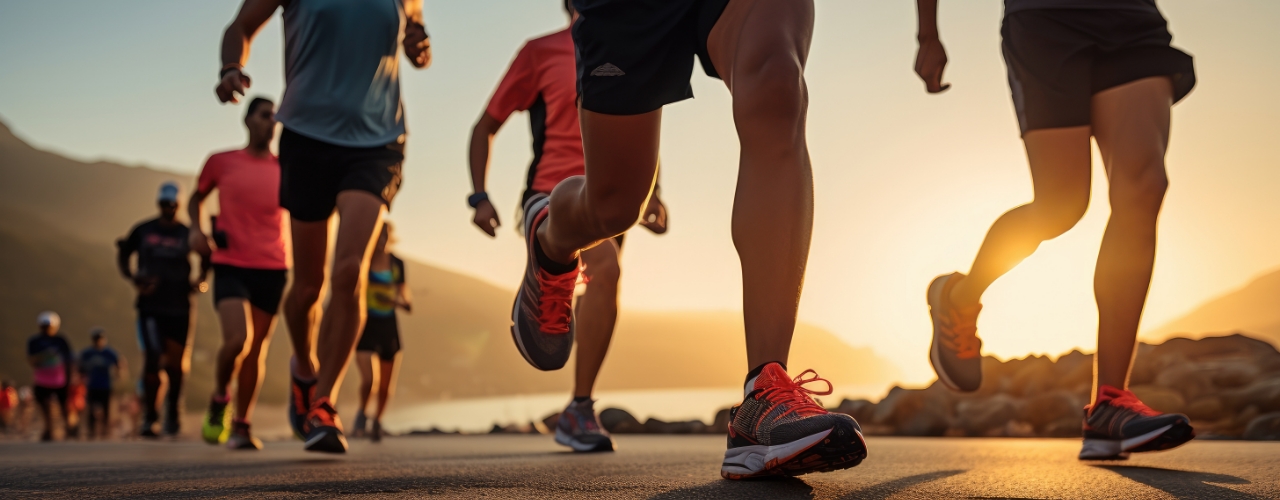Common Running Injuries & How Chiropractic Care or Active Release Techniques (ART) Helps!

By: Dr Stefanie Tropea, DC
Spring is here! The weather is getting warmer and the motivation to get outside and exercise suddenly appears. You dust off your running shoes and go for a nice, long run. It feels great to be outside and you’re feeling good, feeling like you can run forever! After a few weeks of this, you notice hip pain, knee pain, shin pain or foot pain. This is what happens when you do too much, too soon, too fast. Let’s discuss 5 of the most common running injuries that can occur if you’re not training properly:
- Greater Trochanteric Pain Syndrome: This usually presents as pain on the side of your hip, your buttock, and your thigh. It might even disrupt your sleep, and you may find it difficult to lie on the side of pain. It is very common to have tension and knots in the gluteal muscles, the hip flexors, and the lower back muscles with this condition.
- Patellofemoral Pain Syndrome (Runner’s Knee): This can be caused by muscle imbalances or cumulative overload and presents with dull pain all around the knee and sometimes swelling and locking of the knee joint. It is very common to have tension and knots in the hip muscles and quads.
- Medial Tibial Stress Syndrome (Shin splints): This is usually caused by excessive or improper training and pain is usually felt on the inner portion of the shin during running. The pain may subside after getting warmed up, but in the long-term, the pain can linger. Tension and knots are usually found in the muscles of the shins and calves.
- Plantar fasciitis: This is usually caused by tension in the calf muscles pulling on the plantar fascia, and presents as pain in the foot or heel with the first few steps after getting out of bed in the morning or after prolonged activity.
- Achilles tendonitis: This presents as pain in the back of the ankle or heel that gets worse with activity. It is common to find tension and knots in the calf muscles with this condition.
So, that’s the bad news. The good news is that chiropractic care & ART can help you get through these injuries and get you back out there on the pavement, pain free! Chiropractors are musculoskeletal specialists, and although we are most well-known for treating the spine, we often also treat other areas of the body, like shoulders, hips, knees, and ankles. One of the ways we at ProClinix treat these injuries mentioned above is with Active Release Techniques (ART). This is a method by which certified providers can treat soft tissues – the muscles, the ligaments, the nerves, and the tendons – to reduce pain, increase range of motion, and help speed up the healing process. During an ART session, the practitioner feels for tension or knots in the muscles that develop due to overload or repetitive use. Once that is established, the practitioner then applies deep pressure to the muscle, and instructs the patient to move that muscle from a shortened to a lengthened position, resulting in improved range of motion, improved function, and less pain.
It goes without saying that running has plenty of health benefits – it lowers blood pressure, reduces the risk of diabetes, depression, and even Alzheimer’s. So, if you enjoy running and want to reap these benefits, you’ll want to make sure you’re doing everything you can to avoid injury. The best way to avoid the injuries discussed here is to build up to being able to run longer distances. For example, follow a running program — don’t just wing it! Proper progression is essential to your success. Be sure to get enough rest between sessions, fuel yourself properly and drink enough water. These injuries can sometimes happen anyway, from overuse, muscle weaknesses, or using the wrong shoes, for example. If you think you might have any of the injuries mentioned above or just want to prevent them, give Active Release Techniques a shot.

